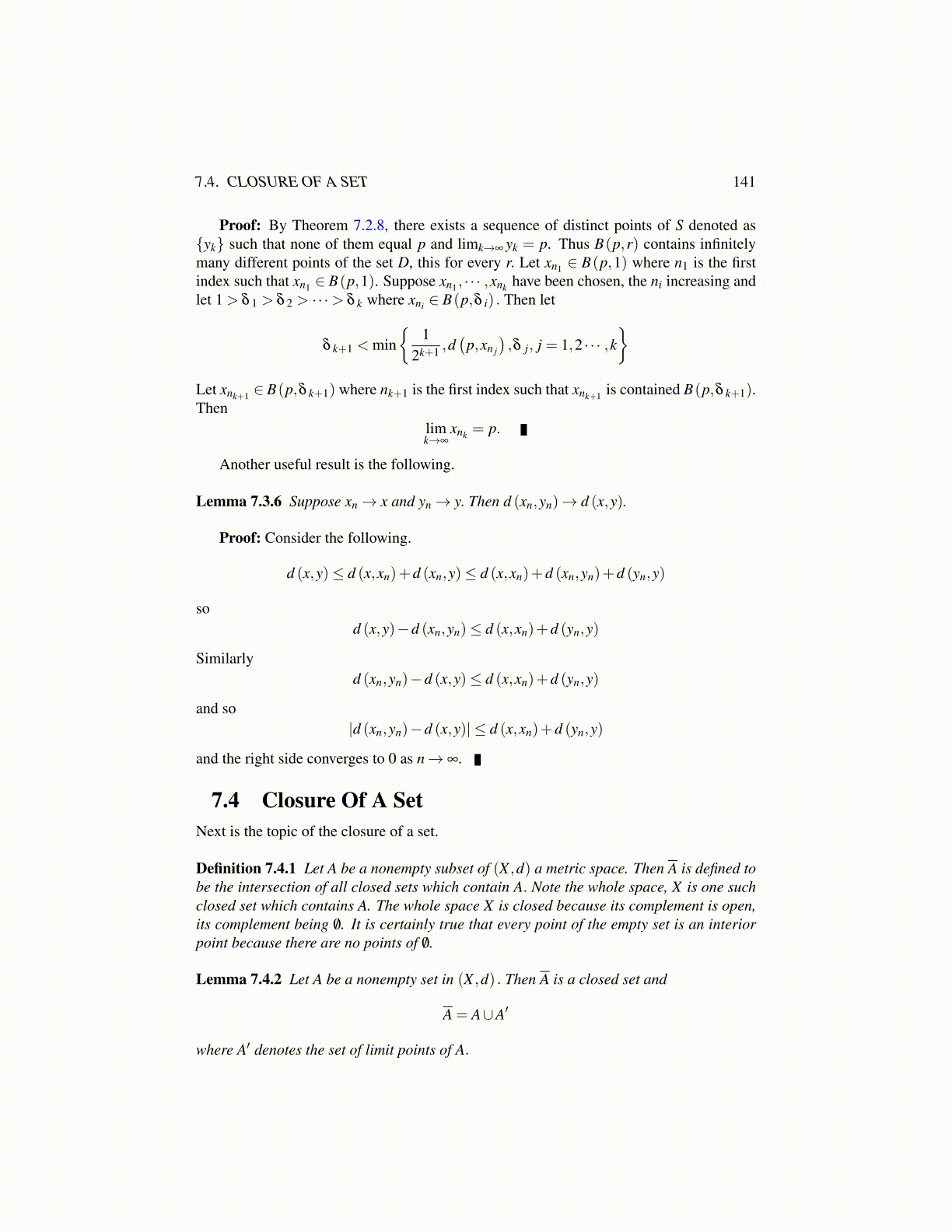
7.4. CLOSURE OF A SET 141
Proof: By Theorem 7.2.8, there exists a sequence of distinct points of S denoted as{yk} such that none of them equal p and limk→∞ yk = p. Thus B(p,r) contains infinitelymany different points of the set D, this for every r. Let xn1 ∈ B(p,1) where n1 is the firstindex such that xn1 ∈ B(p,1). Suppose xn1 , · · · ,xnk have been chosen, the ni increasing andlet 1 > δ 1 > δ 2 > · · ·> δ k where xni ∈ B(p,δ i) . Then let
δ k+1 < min{
12k+1 ,d
(p,xn j
),δ j, j = 1,2 · · · ,k
}Let xnk+1 ∈ B(p,δ k+1) where nk+1 is the first index such that xnk+1 is contained B(p,δ k+1).Then
limk→∞
xnk = p.
Another useful result is the following.
Lemma 7.3.6 Suppose xn→ x and yn→ y. Then d (xn,yn)→ d (x,y).
Proof: Consider the following.
d (x,y)≤ d (x,xn)+d (xn,y)≤ d (x,xn)+d (xn,yn)+d (yn,y)
sod (x,y)−d (xn,yn)≤ d (x,xn)+d (yn,y)
Similarlyd (xn,yn)−d (x,y)≤ d (x,xn)+d (yn,y)
and so|d (xn,yn)−d (x,y)| ≤ d (x,xn)+d (yn,y)
and the right side converges to 0 as n→ ∞.
7.4 Closure Of A SetNext is the topic of the closure of a set.
Definition 7.4.1 Let A be a nonempty subset of (X ,d) a metric space. Then A is defined tobe the intersection of all closed sets which contain A. Note the whole space, X is one suchclosed set which contains A. The whole space X is closed because its complement is open,its complement being /0. It is certainly true that every point of the empty set is an interiorpoint because there are no points of /0.
Lemma 7.4.2 Let A be a nonempty set in (X ,d) . Then A is a closed set and
A = A∪A′
where A′ denotes the set of limit points of A.